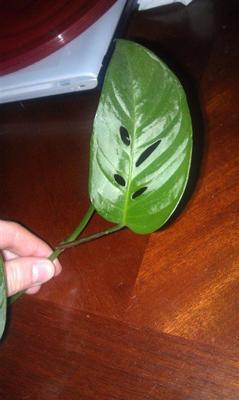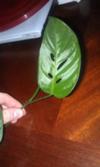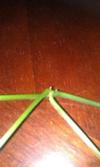by Andrew S.
(Ithaca, NY)




Here is another cutting I got tonight from a friend, no clue what it is. The plant that he had was very tall, and had latched to the wall to grow about 5 feet tall, and then looped back towards the ground.
This grows like a vine with leaves coming off the main stem I suppose, the leaves seem to be a medium size and it appears that they grow with holes in them. Every single leaf had holes, even the smallest new ones. I was surprised that I couldn’t find any information from Google when trying to discover what this one is called.
I have cut it up into mostly 2 leaf sections with the bottom part with root nodes in some water, so I am hoping these will root.
As always, any information you can provide would be awesome!
Ooh, lovely – the Swiss Cheese Plant – guess why it’s called that? In its native habitat, this plant is grown for the fruit, which also explains its botanical name, Monstera deliciosa. It is also called the Split Leaf Philodendron. I’ve seen these get to be really tall – in office buildings and lobbies with height to the ceilings, these will just keep on going.
Bright light, but not too intense will keep the leaves ‘splitting’ which is their way of saying they’re happy. Small, unsplit leaves indicate that the light is not bright enough.
The aerial roots actually glean moisture from the air, which of course in their native habitat would be high in humidity. You can help with this by misting occasionally.
You most likely won’t see blooming or fruiting unless you have a conservatory, but that’s okay, these are very attractive foliage plants anyway.
Be aware that the leaves of this plant are poisonous, even thought the fruit is edible. People have experienced a burning sensation after ingesting the foliage, so keep pets and children away.
You can fertilize this plant with soluble feed, about once or twice a month in summer, none in winter. The amount of water will vary; again, more water in summer, and make sure to leach out any excess fertilizer salts.
The best soil to use for this plant is more on the heavy side, unlike most succulents. They prefer a soil of two parts peat moss, two parts bagged potting soil and one part sand or perlite for drainage.
Best of luck with your jungle!
Jacki


